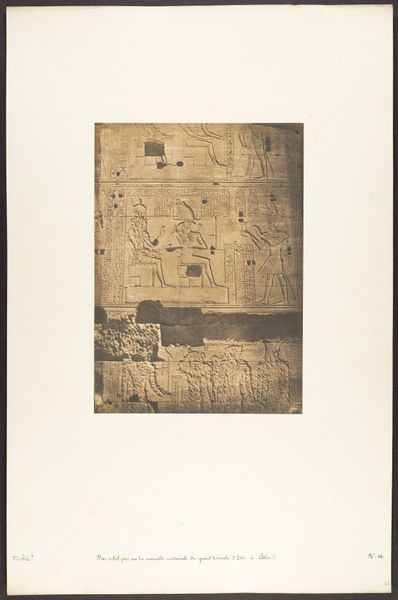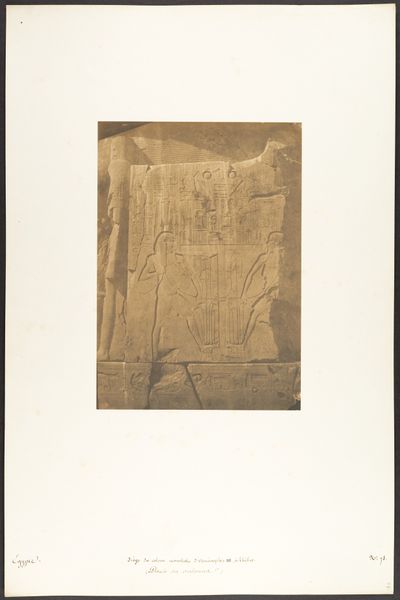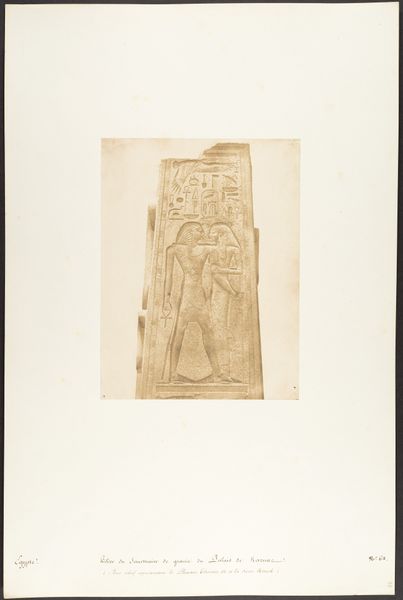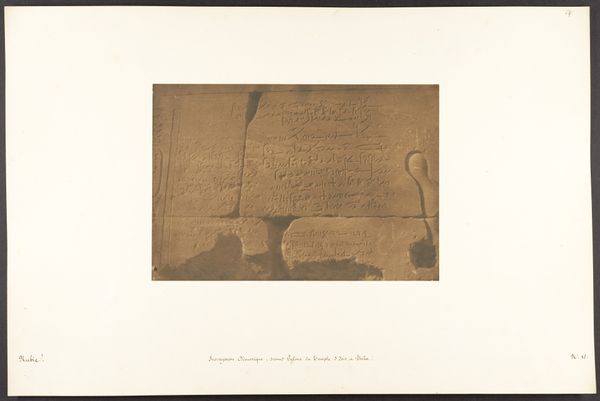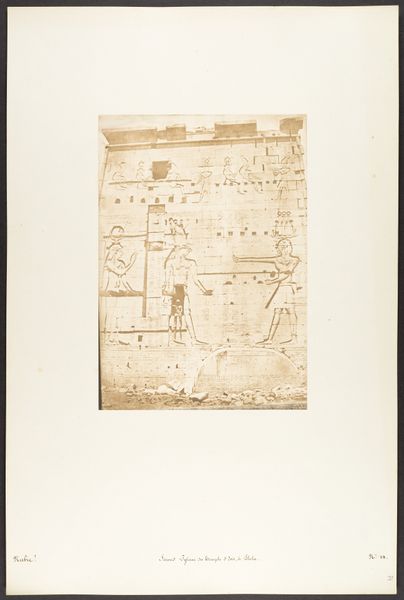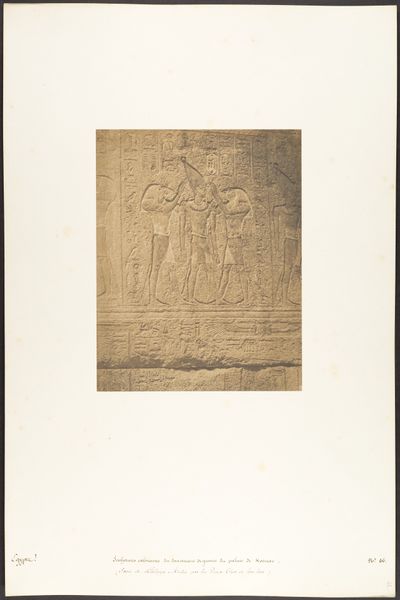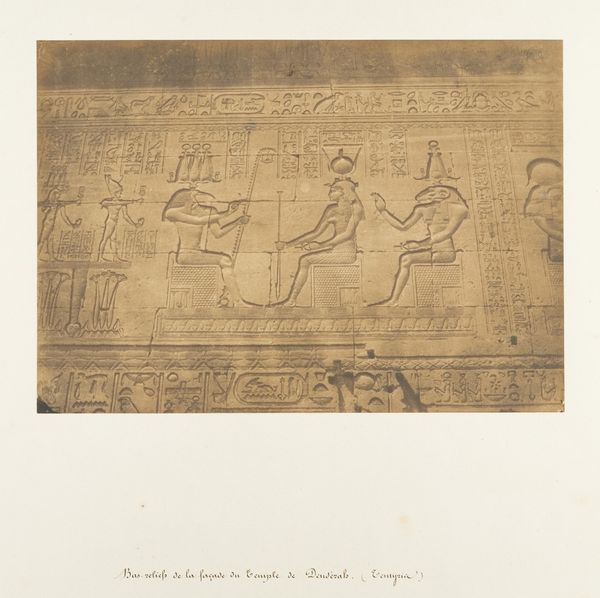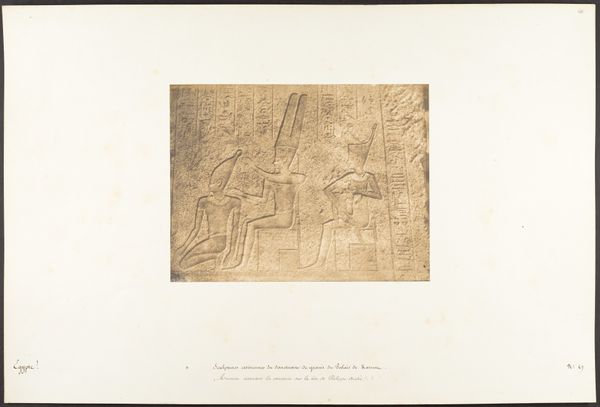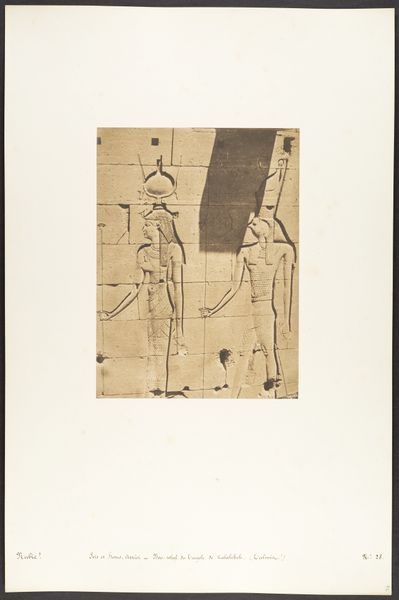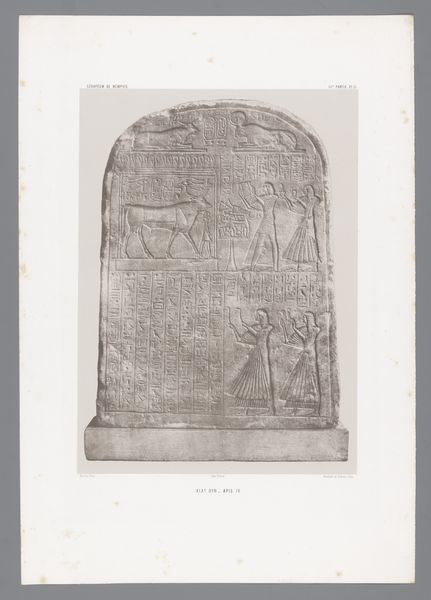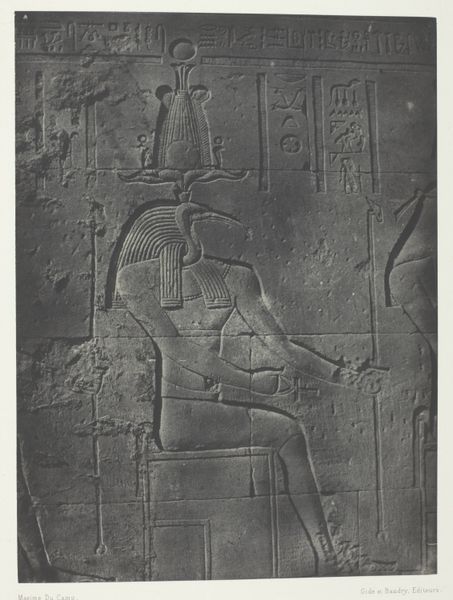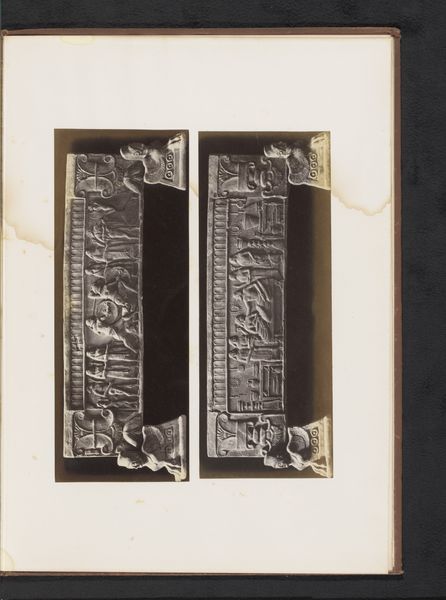
relief, photography, gelatin-silver-print
#
relief
#
ancient-egyptian-art
#
figuration
#
photography
#
ancient-mediterranean
#
gelatin-silver-print
Dimensions: Image: 9 1/8 × 6 1/2 in. (23.2 × 16.5 cm) Mount: 12 5/16 × 18 11/16 in. (31.2 × 47.5 cm)
Copyright: Public Domain
Curator: Let’s turn our attention to this photograph by Maxime Du Camp, created around 1850. It's a gelatin silver print depicting "Thot Ibiocéphale (Dieu des Lettres) à Philae." Editor: My first impression is one of quiet reverence. There’s a stillness captured, like a held breath across centuries. The sepia tones feel almost…sacred. Curator: Absolutely. It's crucial to consider the context in which this image was made. Du Camp, along with Gustave Flaubert, was on a French government-sponsored mission to document Egypt. Photography at the time was a cumbersome, alchemical process. These images weren’t simply snapshots; they were laboriously produced records intended for scholarly use and colonial administration. Editor: Yes, and you can feel that labor! Each line in the relief is given equal importance, even its age and disrepair. And yet it really gives you a glimpse into what awed Flaubert and Du Camp. The sheer scale! That’s always lost in history books, that visceral reaction of seeing these wonders face to face. Curator: The medium itself contributes significantly. The gelatin silver print allows for a remarkable level of detail. You can see the tool marks where the original artisans carved this image of Thoth, the ibis-headed god of knowledge and writing, seated in regal repose. Think of the sociological implications – the control of knowledge represented in carved stone, then further mediated and disseminated through photography. Editor: Right. Thoth embodies intelligence and wisdom, and here he’s literally embedded, literally set in stone! You could imagine the weight of tradition settling on those broad shoulders. Do you get a sense of melancholy from this? Or is it simply age? Curator: A little of both, perhaps. It's impossible to ignore the historical weight and colonial gaze, but the melancholy is certainly there. We are observing the image through time, across so many divides… Editor: Ultimately, though, Du Camp has created something haunting and permanent, an homage to this God of letters and Philae and to photography. Thank you for offering these observations, and helping clarify those layers of meaning. Curator: My pleasure, it is amazing how discussing process brings in additional layers.
Comments
No comments
Be the first to comment and join the conversation on the ultimate creative platform.
